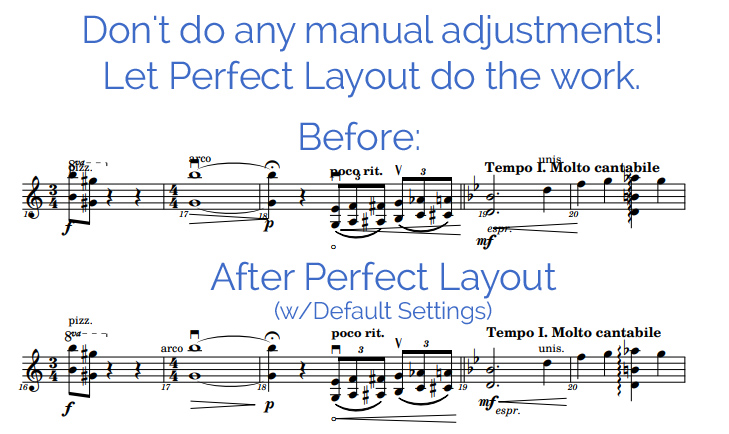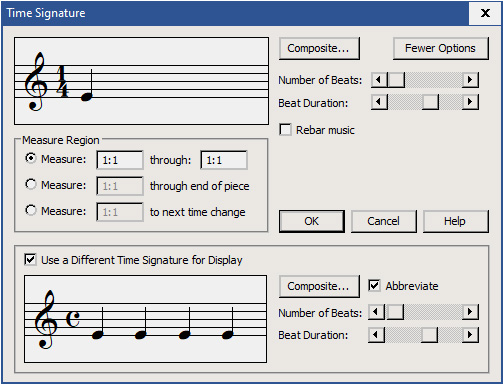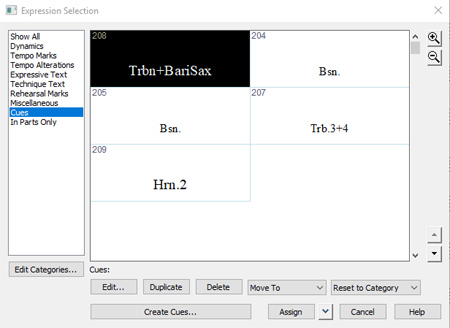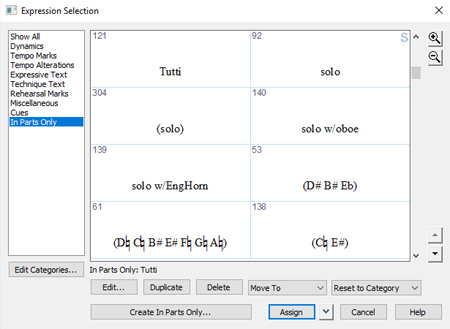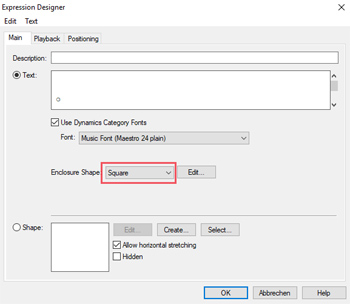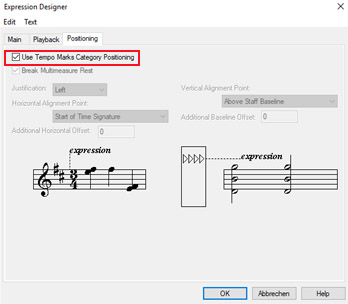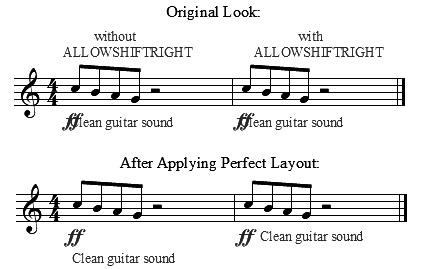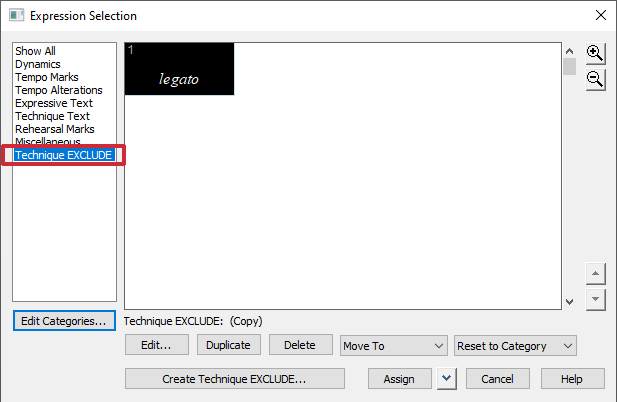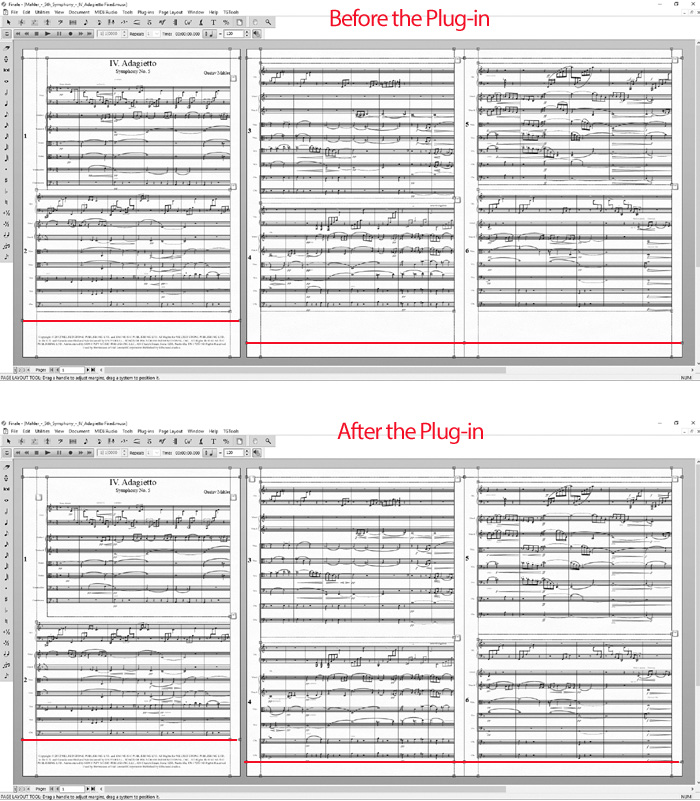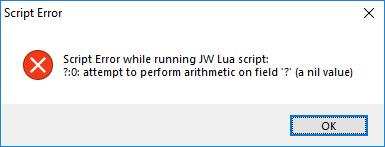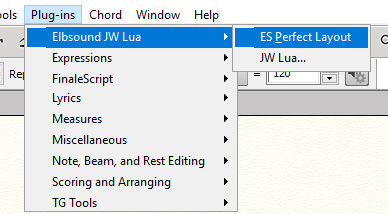The "Reflow Measures/Systems" settings in Finale's preferences are important for ensuring that the plug-in works properly.
They help
maintain or
change the measure and staff system layout as needed.
Depending on the state of your score and linked parts, you may prefer one or the other.
Before running the plug-in, please adjust Finale's
Preferences->Edit->Automatic Settings to your needs.
Note: In Finale a "
locked system" means that the measures will always stay in that system and not move to the previous or next system.
To lock a system, select the page layout tool, select the systems to lock and click on
Utilities->Lock Systems.
Which reflow settings work best for me?
The basic rule is:
a.) For
most documents the best option is to
activate the three options "
Across Systems (Maintain System Locks)", "
Reflow Systems Across Pages" and "
Automatic Update Layout" (see image 12a).
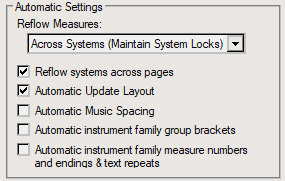
Image 12a: Best settings if you have some locked and (mostly) unlocked systems
You should use "
Across Systems (Maintain System Locks)"
if you have locked some staff systems in your score or parts and want to maintain that staff system layout.
It is also possible to only lock a few systems, but keep the other systems unlocked.
Then Perfect Layout will only adjust the unlocked systems, if necessary.
A common use case is: locked systems in the score, unlocked systems in parts.
Then Perfect Layout can adjust the bar layout in the linked parts and eliminate collisions by moving bars to the next system.
b.) For documents with
many empty measures and no multi-measure yet or if you want to give Perfect Layout the
most freedom for the measure layout, it is recommended to have "
Across Systems (Remove System Locks)", "
Reflow Systems Across Pages" and "
Automatic Update Layout" activated (see image 12b).
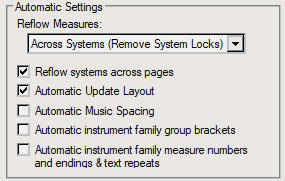
Image 12b: Most flexible setting which allows shifting measures to the previous/next system and staff systems to other pages
c.) If you have
already optimized the measure layout manually and PL should not move measures to other systems, use "
Only Within Systems" (see image 12c).
In this mode only the spacing within a system can be altered through Perfect Layout (e.g. on horizontal collisions).
This setting is also useful if you have already run Perfect Layout for this score or part before and now want to apply it again only to a selected region.
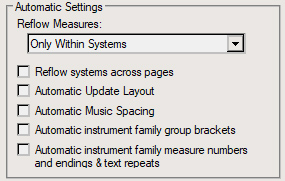
Image 12c: Restrict setting which locks all measures to their current system and all systems to their current page
Note 1: If a linked part has no multi-measure rests yet and many empty measures and automatic multi-measure rest creation is activated, Perfect Layout will
automatically reflow the measures by default if the layout in a part has significantly changed through many multi-measure rests.
In this case only those parts will be affected with a measure reflow where the new multi-measure rests have significantly influenced the layout.
To deactivate that automatic reflow, unselect "
MMRests->Automatic Measure Reflow if the Number of Multi-Measure Rests has Significantly Changed" in the Perfect Layout user dialog.
Note 2: If the "
Only Within Systems" setup is used, the page turn optimization ("
Systems->Optimize Page Breaks with Rest Bars") in Perfect Layout will be deactivated as the plug-in can't move the empty bar to the end of the page anymore.
Note 3: If you still want to lock the measures to a system, but allow PL to move whole systems to the next page (especially in linked parts for the page turn optimization), please also activate "
Reflow Systems Across Pages" (see also next section d.)
d.) If your staff system layout (especially in the parts) is
not optimized yet, activate "
Reflow Systems Across Pages".
If you want Perfect Layout to optimize the part layout for good page turns with rest bar at the end of the page, you
must activate "
Reflow Systems Across Pages".
In most cases it is makes sense to have "
Reflow Systems Across Pages" activated.
Note 4: If you want to maintain your system layout of the score, but allow Perfect Layout to move systems to other pages in linked parts, lock all systems in the score (
Utilities->Lock Systems) and use "
Across Systems (Maintain System Locks)".
Note 5: After the plug-in processing, the "
Across Systems (Remove System Locks)" setting will be automatically reset to "
Maintain System Locks" to ensure that the layout that Perfect Layout has created is not destroyed by Finale's own automatic layout feature.
Attention! Finale's automatic reflow settings are
global options.
However, it would make more sense to have them as a
document option that is stored individually in each document file.
When this feature was introduced in Finale, there was a lot of discussion, because these options which automatically update the layout can accidentally destroy an already optimized layout.
For example, if "
Reflow Across Systems and Pages/Unlock Systems" is activated, you load an optimized score with locked systems to fix only a little detail, Finale will automatically remove all locks and reflow the measures without warning the user.
Therefore, please always use these Finale settings with caution!
The recommended use of the Finale reflow settings is:
1.) During the creation of a new score, set it to "
Reflow Across Systems (Unlock) and Reflow Across Pages".
2.) When the score creation is finished, change it to "
Only within systems/Reflow Across Pages", so that you can only manually shift measures and systems.
3.) When the layout is finished, change it to "
Only within systems/Don't Reflow Across Pages" or even the most strict "
Do Not Reflow".
4.) Before loading an old file that is already optimized and that you only want to have a look at, always set the reflow settings to "
Do Not Reflow".
5.) If you accidentally loaded an old optimized file and
Reflow was activated,
do not accidentally save the document (note Finale's
Auto-Save feature!) as this could overwrite your optimized layout!
Therefore it would make more sense to link Finale's reflow settings directly to the document:
During the different stages of the document creation, these options are used more and more strict.
